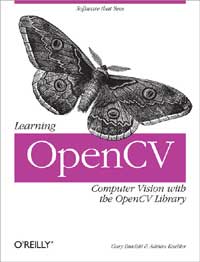
Posted to News on 31st Oct 2008, 17:09
Learning OpenCV
Learning OpenCV puts you in the middle of the rapidly expanding field of computer vision. Written by the creators of the free open source OpenCV library, this book introduces you to computer vision and demonstrates how you can quickly build applications that enable computers to "see" and make decisions based on that data.

Computer vision is everywhere {-} in security systems, manufacturing inspection systems, medical image analysis, Unmanned Aerial Vehicles, and more. It stitches Google maps and Google Earth together, checks the pixels on LCD screens, and makes sure the stitches in your shirt are sewn properly. OpenCV provides an easy-to-use computer vision framework and a comprehensive library with more than 500 functions that can run vision code in real time.
Learning OpenCV will teach a developer to use the framework quickly with the help of hands-on exercises in each chapter. The book includes:
- A thorough introduction to OpenCV
- Getting input from cameras
- Transforming images
- Segmenting images and shape matching
- Pattern recognition
- including face detection
- Tracking and motion in 2 and 3 dimensions
- 3D reconstruction from stereo vision
- Machine learning algorithms
Getting machines to see is a challenging goal, whether you want to build simple or sophisticated vision applications, and Learning OpenCV is a good book to get you started.
Learning OpenCV
Dr. Gary Rost Bradski , Adrian Kaehler
ISBN: 9780596516130, 575 pages, Book Price: $49.99, 30.99, €40.00
www.oreilly.com/catalog/9780596516130
About the authors
Dr. Gary Rost Bradski is VP of Technology at Rexee Inc. a new startup applying machine learning to rich media on the web. He has a PhD from Boston University. His current interest is in applying highly scalable statistical models in computer vision and in continuous machine "learning in clutter" in robotics in general.
Adrian Kaehler is a senior scientist at Applied Minds Corporation. His current research includes topics in machine learning, statistical modeling, and computer vision. Adrian received his Ph.D. in Theoretical Physics from Columbia university in 1998 and has since held positions at Intel Corporation and the Stanford University AI Lab. He has a variety of published papers and holds patents in physics, electrical engineering, computer science, and robotics.
Want the latest machine building news straight to your inbox? Become a MachineBuilding member for free today >>

















